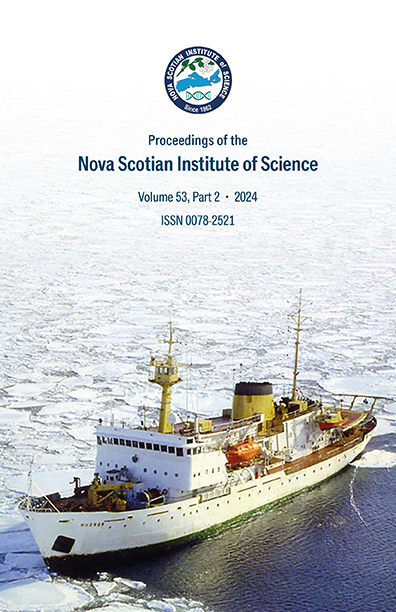Rapid drops of ocean temperatures in several shallow bays in Nova Scotia during a recent cold air outbreak
DOI:
https://doi.org/10.15273/pnsis.v53i2.12323Abstract
Abstract
From February 3-5, 2023 Atlantic Canada experienced an extreme
cold Arctic air outbreak with high winds that set many local meteor-
ological records, including wind chills as low as -47°C. The impacts of the cold air outbreak on ocean temperatures and ice formation are investigated using predictions from the Coastal Ice-Ocean Prediction System for the East Coast of Canada (CIOPS-E), developed by Environment and Climate Change Canada. Observations from moorings further inform the predictions. The analysis suggests that during the event, several shallow bays and coastal areas in Nova Scotia experienced significant, abrupt temperature decreases ranging from 1.0 to 3.9°C. Overall cooling estimated by the model was 2.3°C for nearshore locations where observations recorded an average temperature decrease of 3.0°C. On the other hand, at individual sites the difference between observed and modelled cooling was up to 2.4°C. This difference can be attributed partly to the fact that the model does not adequately resolve the coastline features of some of the nearshore mooring sites.
In comparison, we also analyze another cold air outbreak that occurred on December 15-18, 2016, with wind chills as low as -37°C. The ocean temperatures changes associated with this earlier event saw decreases of 0.8 to 3.5°C, potentially contributing to an ongoing fish kill in St. Mary’s Bay (near the mouth of the Bay of Fundy) at the time.
Keywords: Ocean temperature, Cold air outbreak, Ocean forecasting, Shallow bays, Nova Scotia


